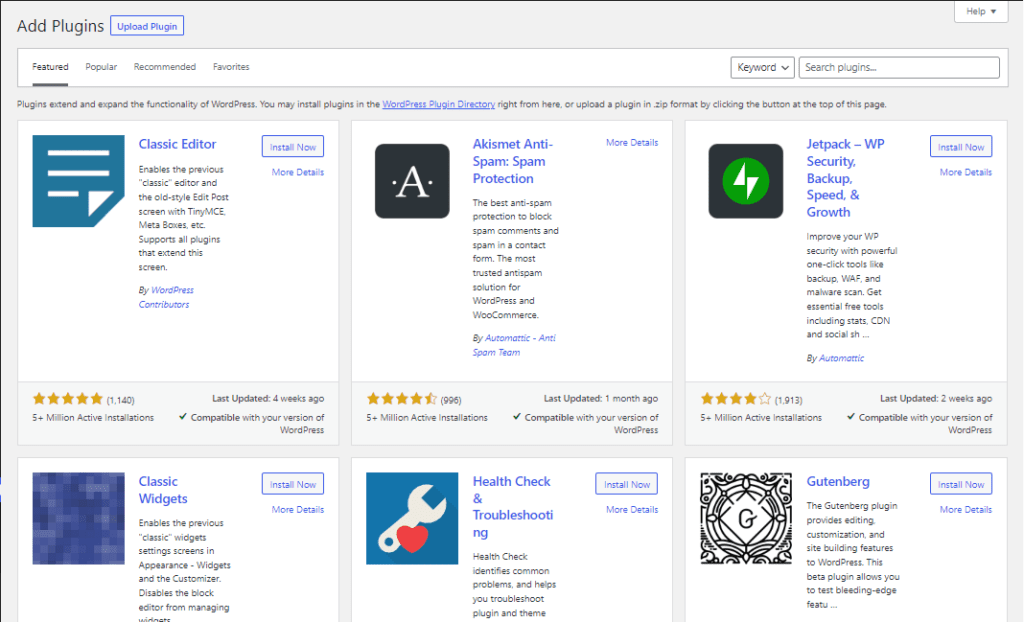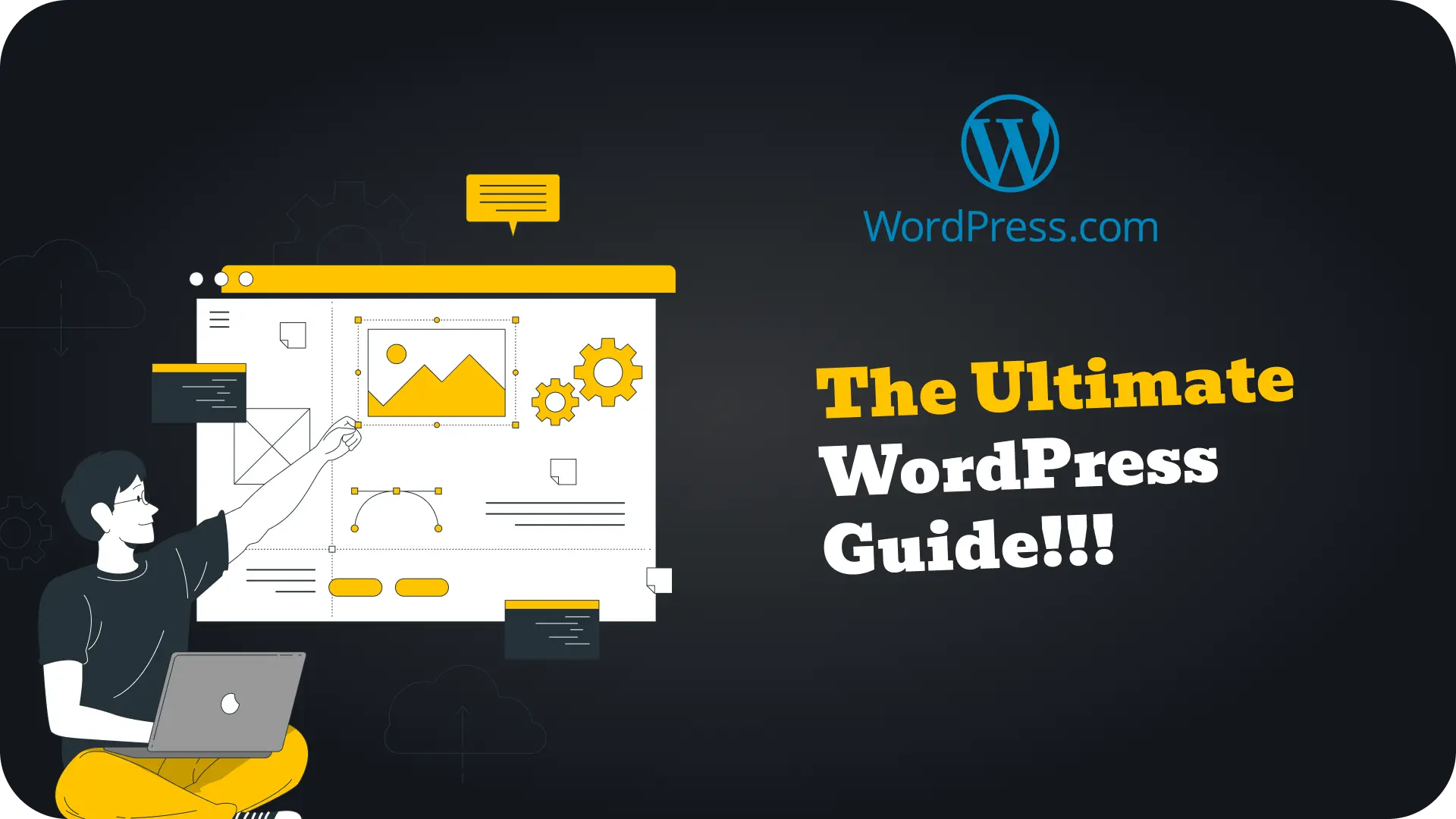Introduction
Welcome to this comprehensive guide on building a WordPress website in 2023. In today’s digital age, the value of a robust online presence cannot be overstated. With WordPress, you can establish a versatile website with relative ease. This blog post aims to delineate the nine pivotal steps you need to create a WordPress website. From choosing a domain name to promoting your site, we’ve got it all covered. So, let’s dive right in and kickstart your WordPress development journey.
Benefits of a WordPress website in 2023
Flexibility: WordPress supports a myriad of plugins and themes to suit diverse business needs.
Community Support: Its expansive community ensures you’re never alone when you encounter issues.
SEO Ready: With built-in SEO tools, WordPress ensures that your site always stays in the limelight.
Stay with us as we navigate through these nine invaluable steps to construct your website.
Step 1: Find & register domain & hosting for your WordPress website
A domain name is your website’s address on the internet. Think of it as the signboard outside a shop. It’s crucial for branding and making a memorable impression.
Importance of domain name
Credibility: A proper domain name gives your business a professional stature.
Visibility: It can improve search engine ranking, especially if it contains relevant keywords.
Branding: Helps in brand recall and building brand equity.
Tips for choosing a domain name
Relevance: Ensure it aligns with your business. If you’re into organic foods, something like “OrganicDelights.com” could be apt.
Avoid Numbers and Hyphens: They can be misunderstood. Avoid “4u” or “best-food-ever” types.
Use Keywords: Incorporate terms related to your business, like “bakery” or “jewelry.”

What does hosting a website mean?
Every site needs a home; web hosting provides that space. The domain is your address; hosting is your property. Web hosting provides storage for your website files. It’s a service that allows your website to be accessed on the Internet. It stores all your website files, images, content, and databases. Without it, your site won’t be accessible to users.
Types of Web Hosting
Shared Hosting: Economical but may offer limited resources.
VPS Hosting: Dedicated resources but requires some tech knowledge.
Managed WordPress Hosting: Tailored for WordPress with added perks.
Expert Recommendation
Companies like Bluehost or SiteGround are renowned for their WordPress compatibility, and provide carefully crafted plans suitable to WordPress requirements. For a more detailed comparison of the various WordPress hosting plans, read our article comparing the top 10 most popular WordPress hosting options.
Of note: WordPress has recently launched their 100-year domain & hosting plan! Check out the details here!
Step 2: Install WordPress on your web host
At the core of your website lies WordPress. WordPress is the world’s most popular CMS & it is a powerhouse, ideal for a multitude of diverse & scalable websites.
Benefits of using WordPress
- Open Source: It’s free and can be customized by anyone.
- Flexibility: Whether you’re a blogger or run an e-commerce site, WordPress molds as per your needs.
- Community Support: A vast community is available for troubleshooting.
How to install WordPress
One-Click Installation: In case you have chosen one of the WordPress hosting plans as mentioned in the previous steps, you’ll get WordPress installed by default. This is a hassle-free method. Select WordPress, click install, and you’re good to go!
Manual Installation: If you’re looking for a more version specific, or a more hands-down approach to WordPress, you can go for a manual installation. Download WordPress from its official site. Upload it to your hosting server using an FTP client. Create a MySQL database and user. USE THIS OPTION ONLY IF YOU HAVE AN IDEA OF WHAT YOU ARE DOING!
Step 3: Choose a theme for your WordPress website
Themes dictate your site’s visual narrative. They constitute the basic building blocks of your WordPress website, and they make sure that your website design is consistent across pages. Everything from how an image and button looks, to how headers, footers & blog content will be displayed, a theme defines it all!
Why Themes Matter
Aesthetic Consistency: Ensures design harmony across all pages and posts.
Built-in Features: Some themes come with embedded functionalities, negating the need for certain plugins.
Mobile Optimization: Many themes now offer mobile-responsive designs, essential for modern web traffic.
How to find a theme for your WordPress website

- Browse themes in the WordPress repository or on theme marketplaces like Theme Forest.
- Preview, install, and then activate your chosen theme.
Step 4: Customize WordPress with plugins and widgets
Here’s where you begin tailoring your site to your exact requirements.
Why do I need plugins & widgets on my WordPress site
Enhanced Functionality: Plugins can introduce features like SEO tools, contact forms, and eCommerce capabilities.
Personal Touch: Widgets allow placement of features in sidebars and footers, offering users more to interact with.
How to use plugins & widgets
- Browse the WordPress plugin directory. Research top-rated plugins that align with your needs.
- Widgets can be added via Appearance > Widgets.

Step 5: Create the pages for your WordPress website
Pages are the pillars of your site. They host the essential information about your brand or business.
WordPress website page essentials
Navigation: Critical pages guide users, helping them locate the information they seek.
SEO Value: Dedicated pages (like ‘Services’) can be optimized for specific keywords.
How to create WordPress website Pages
- Consider your audience’s needs. What information do they seek?
- Use WordPress’s block editor to create, design, and publish each page.

Step 6: Add a blog section to your website
Blogs aren’t merely about sharing; they’re about engaging, informing, and building authority.
Why your website should have a blog
Engagement: Fresh content keeps your audience returning, fostering community.
SEO Boost: Regularly updated content can improve site ranking.
Authority Building: Showcase your expertise in your field.
How to add a blog to your WordPress site

- Decide on content categories relevant to your target audience.
- Create posts using the WordPress block editor, incorporating multimedia to enrich content.
- Ensure SEO-friendly headlines and meta descriptions for each post.
Step 7: Optimize your website for search engines
In the vast ocean of the internet, SEO ensures you’re found.
Why SEO is Crucial
Visibility: Improved organic ranking leads to increased visibility.
Traffic Boost: Higher visibility can lead to increased organic traffic.
User Experience: SEO also focuses on enhancing user experience, keeping visitors engaged.
How to perform SEO on your WordPress site
- Install SEO plugins like Yoast SEO or Rank Math to guide on-page SEO.
- Regularly audit your site for SEO, using tools like SEMrush or Ahrefs.
- Incorporate Google Analytics and Google Search Console for performance tracking.
Step 8: Secure your website from hackers and spammers
Your website is your fortress; guard it well.
Significance of Security
Data Protection: Safeguard both your data and that of your visitors.
Reputation: A compromised site can damage your brand’s image.
Uptime: Security breaches can lead to site downtime, affecting traffic and revenue.
Steps to execute
- Use security plugins such as Wordfence or AIOS for real-time monitoring.
- Regularly backup your website. Many hosting providers offer automated backups.
- Use SSL certificates, ensuring your website data is encrypted, bolstering trust.
Step 9: Promote your website on social media and email marketing
Building your site is step one; promotion ensures it thrives.
Why Promotion is Vital
Audience Building: Extend your reach to potential followers or customers.
Engagement: Engage with your audience in real-time, building rapport.
Traffic Generation: Direct targeted traffic to your site.
Steps to execute
- Integrate social media plugins, facilitating content sharing.
- Set up profiles on major platforms like Facebook, Twitter, and Instagram, aligning with your brand’s voice.
- Use email marketing plugins such as Mailchimp or ConvertKit to nurture leads and keep your audience updated with newsletters.
Conclusion
Congratulations! You’ve now acquainted yourself with the 9 fundamental steps to create a WordPress website in 2023.By faithfully following these nine steps, you’re not just constructing a WordPress site; you’re crafting a digital experience. An engaging space where your voice resonates, your brand shines, and your audience feels at home. We encourage you to share your journey in the comments below or even subscribe for more in-depth tutorials. Dive into this digital adventure, and may your WordPress journey in 2023 be truly spectacular!

